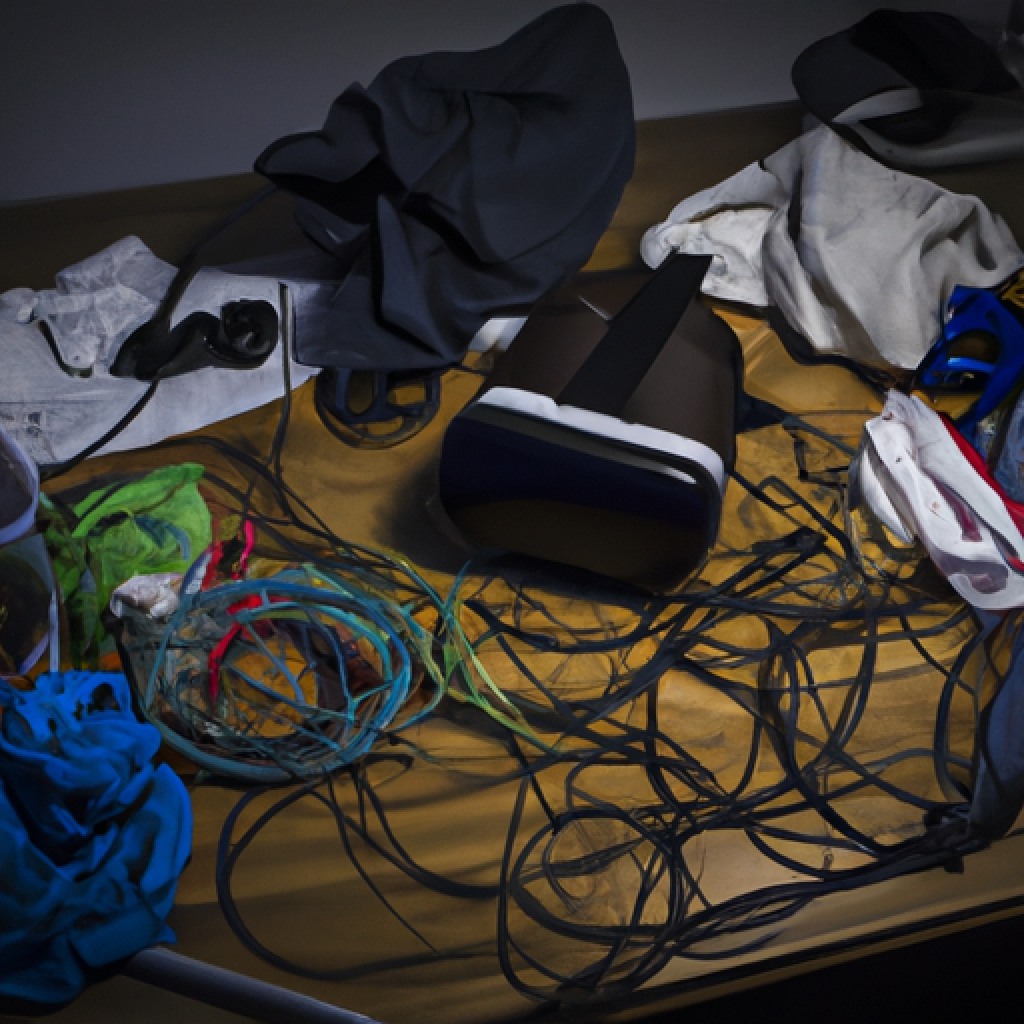Is Too Much VR Bad For You?
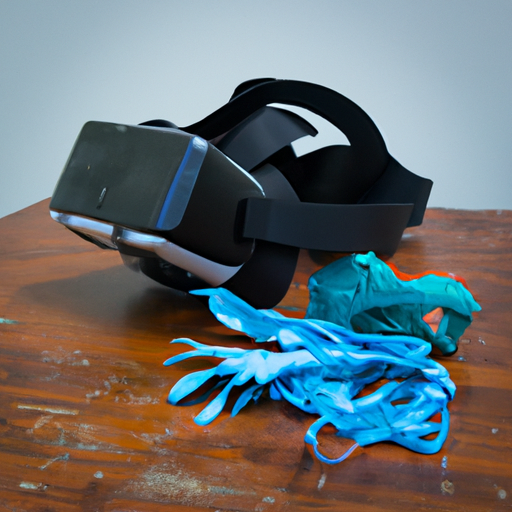
I’ve always loved immersing myself in the world of virtual reality (VR), but recently I’ve started to wonder if there may be some downsides to indulging in it too often. With the increasing popularity of VR technology, it’s important to consider whether spending excessive amounts of time in the virtual realm could have negative effects on our minds and bodies. In this article, I’ll explore the potential risks associated with spending too much time in VR and shed light on the debate surrounding its long-term impact. So, buckle up and let’s take a closer look at whether too much VR is actually bad for you.
Understanding Virtual Reality (VR)
Virtual Reality (VR) refers to a simulated experience that can be similar to or completely different from the real world. It takes the user into a three-dimensional, computer-generated environment, allowing them to interact with and navigate through it. VR typically involves the use of a headset or other devices that create an immersive visual and auditory experience.
Definition of VR
VR is an advanced technology that uses computer-generated imagery, sound effects, and sensory feedback to create a realistic and interactive virtual environment. It aims to immerse users in an artificial world that stimulates their senses, providing a sense of presence and engagement.
Usage and Application of VR
VR technology has wide-ranging applications in various industries, including gaming, entertainment, education, healthcare, training, and simulation. In gaming and entertainment, VR offers a more immersive and realistic experience, enhancing the level of engagement and enjoyment. In education and training, VR enables interactive learning experiences and simulations that can help users acquire new skills in a safe and controlled environment. In healthcare, VR is being used for medical training, therapy, and pain management.
Evolution and Growth of VR Technology
VR technology has come a long way since its inception. It has evolved from basic systems with limited capabilities to sophisticated devices that offer high-quality visuals, improved tracking, and better user experience. The growth of VR technology can be attributed to advancements in computer graphics, display technology, and computing power. With the increasing demand for immersive experiences, VR is expected to continue evolving and becoming more accessible to the general public.
Types of VR
There are several types of VR that cater to different user preferences and requirements. Let’s take a closer look at some of the main types:
Immersive VR
Immersive VR refers to virtual reality experiences that fully immerse the user in a computer-generated environment. This type of VR typically involves the use of a head-mounted display (HMD) that covers the user’s eyes and ears, creating a sense of presence and making them feel as if they are physically present in the virtual world. Immersive VR often requires additional sensory feedback, such as haptic devices, to enhance the user’s immersion and interactivity.
Non-immersive VR
Non-immersive VR allows users to experience virtual environments without full immersion. It usually involves viewing the virtual world on a computer screen or projection, rather than through a head-mounted display. Non-immersive VR is commonly used for applications where complete immersion is not necessary, such as architectural walkthroughs, virtual tours, and product visualization.
Web-based VR
Web-based VR refers to virtual reality experiences that can be accessed through a web browser, without the need for additional software or plugins. This type of VR is becoming more popular as it allows users to easily access and interact with virtual content through the internet. Web-based VR is often used for marketing purposes, product showcases, and interactive storytelling.
Collaborative VR
Collaborative VR enables multiple users to experience and interact with the same virtual environment simultaneously. This type of VR is particularly useful for team collaboration, training simulations, and virtual meetings. Collaborative VR enhances communication and teamwork by providing a shared space where users can interact and work together, regardless of their physical location.
Augmented VR
Augmented VR combines virtual reality with elements of the real world. It overlays virtual objects and information onto the user’s view of the real environment, enhancing their perception and interaction with the surroundings. Augmented VR is commonly used in applications such as augmented gaming, real-time navigation, and industrial maintenance.
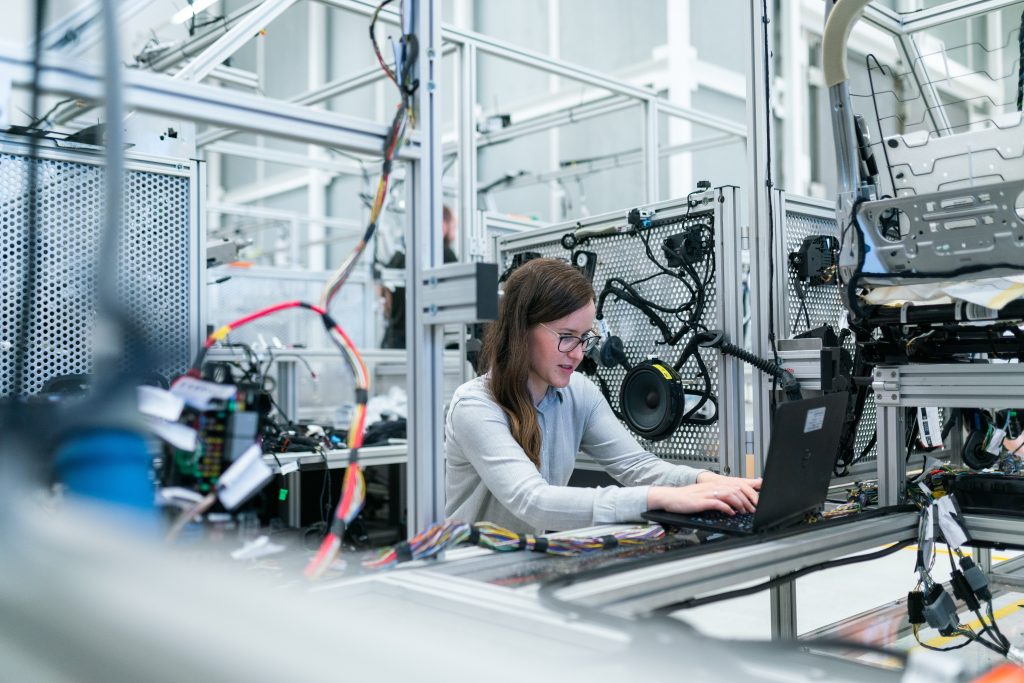
Physical Effects of VR
While VR offers exciting and immersive experiences, it can also have physical effects on users. It’s important to be aware of these effects to ensure a safe and comfortable VR experience.
VR-induced Motion Sickness
One of the most common physical effects of VR is motion sickness, also known as simulator sickness. VR-induced motion sickness occurs when there is a mismatch between the visual cues received from the virtual environment and the user’s motion perception. This can result in symptoms such as nausea, dizziness, headaches, and sweating.
To minimize the risk of motion sickness, it is recommended to start with shorter VR sessions and gradually increase the duration as the user becomes more accustomed to the technology. Taking breaks during VR sessions and focusing on stationary or slow-moving experiences can also help reduce the symptoms.
Effects on Vision
Extended use of VR can have temporary effects on vision, especially when the display is very close to the eyes. Some users may experience temporary blurriness or eye strain after using VR for an extended period. It is important to take regular breaks during VR sessions and to maintain proper eye hygiene. Adjusting the headset’s settings and ensuring correct positioning and focus can also help reduce the strain on the eyes.
Physical Discomfort and Injuries
Wearing a VR headset for an extended period can lead to physical discomfort, such as pressure on the face or head. It is crucial to ensure that the headset is properly adjusted and fits comfortably on the user’s head to avoid unnecessary strain or discomfort. Additionally, users should be cautious of their physical surroundings while immersed in VR to prevent accidents or injuries.
It is recommended to create a safe and clear play area before starting a VR session, ensuring that there are no obstacles or potential tripping hazards in the vicinity. Users should also be mindful of their body movements and avoid sudden or risky actions that could lead to collisions or falls.
Associations between VR and Mental Health
In addition to the physical effects, VR can have implications for mental health and well-being. It is essential to understand these associations to ensure the responsible and healthy use of VR technology.
VR Use and Cognitive Functions
Research on the effects of VR on cognitive functions is still in its early stages, but preliminary findings suggest that VR can positively impact certain cognitive abilities. Studies have shown that VR can enhance learning and memory formation, spatial awareness, and problem-solving skills. The interactive and immersive nature of VR experiences can provide a more engaging learning environment, stimulating the brain and improving cognitive functions.
However, it is crucial to balance VR use with other cognitive activities and to avoid excessive reliance on VR as the sole source of stimulation. Combining VR experiences with real-world learning and mental exercises is important for maintaining a well-rounded cognitive development.
Effects on Mental Well-being
VR has also been explored as a tool for improving mental well-being and managing psychological conditions. Virtual reality therapy has shown promising results in the treatment of anxiety disorders, phobias, post-traumatic stress disorder (PTSD), and other mental health conditions. By providing controlled and immersive exposure to anxiety-inducing situations, VR therapy can help individuals overcome their fears and anxieties in a safe and controlled environment.
While VR therapy can be effective, it should only be used under the guidance of a qualified healthcare professional. The potential for triggering certain psychological responses or exacerbating existing mental health conditions should be taken into consideration.
Depersonalization and Derealization Effects
Depersonalization and derealization are psychological phenomena that can sometimes occur after using VR. Depersonalization refers to a sense of detachment or disconnection from one’s self, while derealization involves a feeling that the external environment is unreal or distorted. These effects are typically temporary and fade shortly after ending the VR session.
Users who are prone to experiencing depersonalization or derealization may want to exercise caution when using VR, as it can potentially exacerbate these symptoms. It is important to be aware of one’s mental health state and to discontinue VR use if any distressing symptoms arise.

Long-Term Usage Effects of VR
The long-term effects of VR usage are still under investigation, and more research is needed to fully understand the implications. However, some potential concerns have been identified.
Potential Adverse Effects
Prolonged and excessive use of VR may have adverse effects on the human body and mind. Continuous exposure to the virtual environment can lead to sensory overload and fatigue, potentially resulting in cognitive decline or decreased performance in real-world tasks. Long-term VR usage may also impact attention span, concentration, and memory retention.
To mitigate these potential adverse effects, it is important to limit and balance VR usage with other activities that promote cognitive and physical well-being. Taking regular breaks and maintaining a healthy lifestyle are essential for maintaining overall health and minimizing any negative impacts of VR.
Addiction to VR
As with any form of technology, there is a risk of addiction to VR. The immersive and engaging nature of VR experiences can make it difficult for some individuals to disengage from the virtual world and return to reality. Excessive use of VR can lead to neglect of real-life responsibilities, social isolation, and diminished real-world interactions.
To prevent addiction, it is crucial to establish healthy boundaries and set limits on VR usage. Creating a schedule, engaging in other activities, and maintaining a strong support network can help individuals maintain a healthy balance and prevent excessive reliance on VR.
Implications for Social Engagement and Relationships
VR has the potential to impact social engagement and relationships. While collaborative VR experiences can enhance teamwork and communication, excessive use of VR may lead to social isolation and reduced face-to-face interactions. Spending an excessive amount of time in the virtual world can hinder the development of real-world relationships and social skills.
Maintaining a healthy balance between virtual experiences and real-life social interactions is crucial. It is important to prioritize meaningful connections with others and to ensure that VR usage does not take precedence over maintaining real-world relationships.
Current Research on VR and Health Risks
The health risks associated with VR are an ongoing area of research. Scientists and healthcare professionals are actively studying the effects of VR on various aspects of human health and well-being to gain a deeper understanding of the long-term implications.
Studies on VR Effects
Numerous studies have been conducted to explore the effects of VR on different physiological and psychological parameters. These studies have looked into the physical and mental impacts of VR on individuals of various age groups and health conditions. The findings of these studies have contributed to our understanding of the potential benefits and risks associated with VR usage.
Medical and Health-Focused VR Research
VR is being extensively researched as a tool for medical and healthcare applications. It is being used in pain management, rehabilitation therapy, exposure therapy, surgical training, and more. Researchers are exploring the effectiveness and safety of using VR in these medical contexts, aiming to improve patient outcomes and enhance the quality of care.
Deeper Understanding of Long-Term Implications
While there is still much to learn, ongoing research is helping to uncover the long-term implications of VR usage. Studies are investigating the effects of long-term VR exposure on cognitive functions, mental health, and overall well-being. This research aims to provide insights into the potential risks and benefits of extended VR usage, enabling individuals to make informed decisions about their VR experiences.
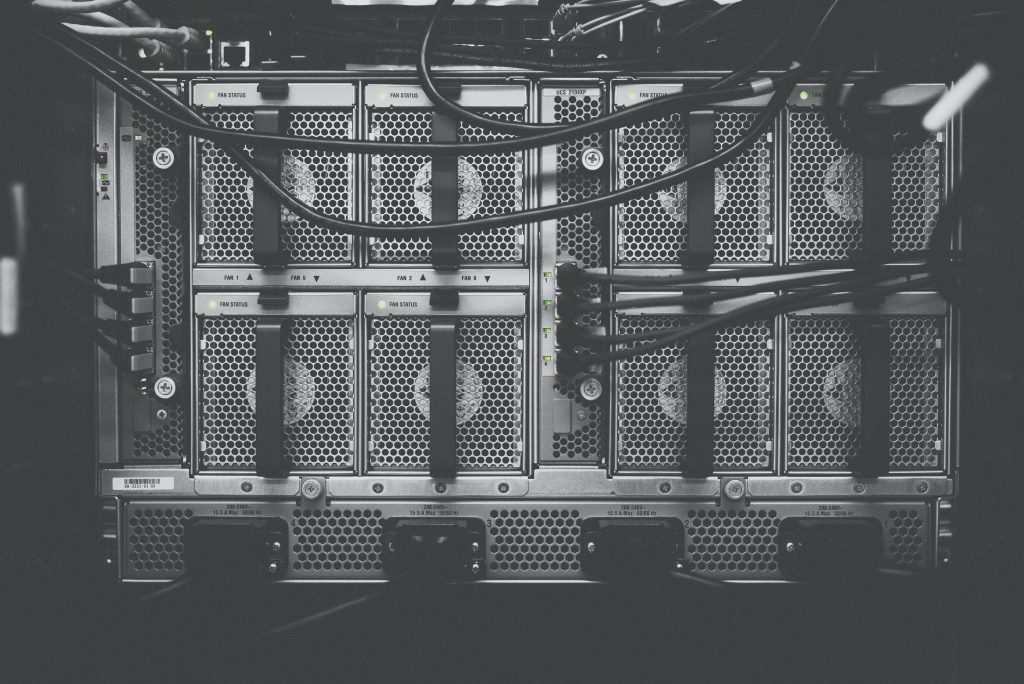
Regulating VR Usage
As the popularity of VR continues to grow, it becomes increasingly important to establish guidelines and recommendations for responsible VR usage. Here are some measures to consider:
Recommendations for Moderate VR Usage
It is recommended to limit VR usage to moderate durations. Starting with shorter sessions and gradually increasing the duration can help users acclimate to the technology and minimize the risk of adverse effects. Establishing a schedule for VR usage and adhering to it can help prevent excessive immersion and potential negative impacts on health.
Breaks and Resting Periods during VR Use
Taking regular breaks during VR sessions is crucial for preventing physical discomfort, mental fatigue, and motion sickness. It is recommended to take short breaks every 20-30 minutes to give the body and mind a chance to rest, and to reorient oneself to the real world. Engaging in activities that promote physical movement and relaxation during breaks can help refresh the body and mind.
Balancing VR Use with Other Physical Activities
Maintaining a balanced lifestyle that includes regular physical activities outside of VR is important for overall health. Engaging in physical exercise, spending time outdoors, and participating in social activities can help counteract the potential negative effects of excessive VR usage. Striking a balance between VR experiences and real-world activities promotes a well-rounded and healthy lifestyle.
Protective Measures while Using VR
To ensure user safety and maximize the benefits of VR technology, it is important to follow certain protective measures.
Correct Usage of VR Gear
Using VR gear correctly is essential for a safe and comfortable experience. Users should carefully read and follow the manufacturer’s instructions for proper setup and use of VR devices. Adjusting the headset for a comfortable fit, ensuring proper hygiene, and familiarizing oneself with the controller or input methods can help prevent discomfort and injuries.
Optimal Environmental Setup
Creating an optimal environment for VR usage is crucial for both safety and enjoyment. Users should set up a clear and unobstructed play area, free of furniture, obstacles, and other hazards. Consistently maintaining a clean and well-lit space can reduce the risk of accidents or collisions. Additionally, ensuring proper ventilation and temperature control can help prevent discomfort during longer VR sessions.
Pre-Usage Medical Checks
Individuals with pre-existing medical conditions should consult with a healthcare professional before engaging in extensive VR usage. Certain health conditions, such as epilepsy or severe motion sickness, may be exacerbated by VR experiences. Medical advice and guidance can help users make informed decisions about the appropriateness and safety of VR for their specific situation.
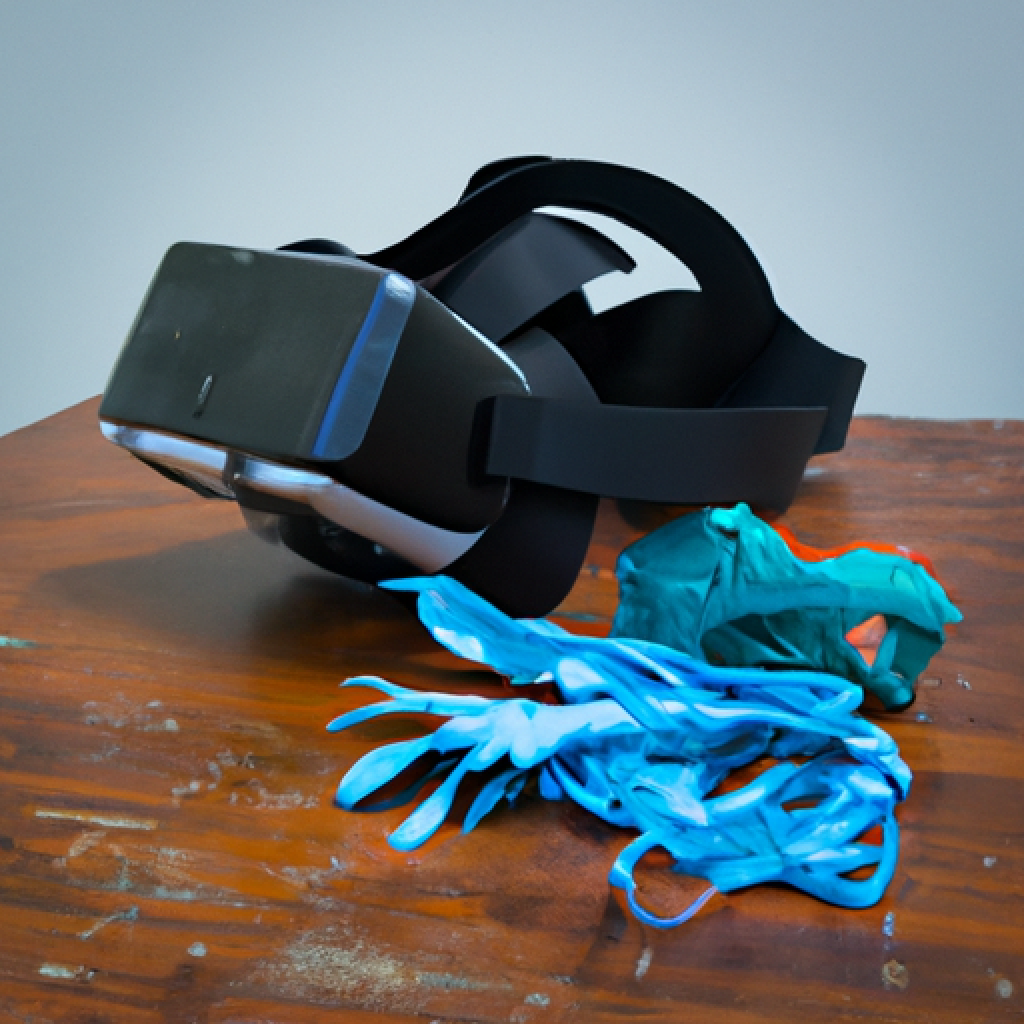
Role of Manufacturers in Ensuring User Safety
Manufacturers of VR devices have a significant responsibility in ensuring user safety. They play a crucial role in designing and manufacturing VR equipment that meets safety standards and guidelines. By incorporating features such as adjustable straps, cushioning, and ergonomic designs, manufacturers can enhance comfort and reduce the risk of physical discomfort or injuries.
Current Preventive Measures in Place
Many VR manufacturers have implemented safety features and guidelines to protect users. These include warning labels, recommended usage times, and safety instructions. Manufacturers also provide information on proper headset adjustments, controller usage, and potential risks associated with VR. Implementing and adhering to these guidelines is essential for a safe and enjoyable VR experience.
Opportunities for Improvement
As VR technology continues to evolve, there are opportunities for manufacturers to further enhance user safety. This can be achieved through ongoing research, advancements in ergonomics, and improvements in sensory feedback systems. By prioritizing user safety and addressing potential risks, manufacturers can contribute to a healthier and more responsible use of VR technology.
Can Using AR Glasses for an Extended Period of Time Have Negative Health Effects?
Extended use of AR glasses may pose potential risks to health. Prolonged exposure to the virtual world through these glasses could lead to issues such as eye strain, headaches, and discomfort. While further research is needed to fully understand the long-term impact, it is important to use caution and take breaks to minimize the potential risks of ar glasses.
The Future of VR and Health Concerns
The future of VR holds both exciting advancements and ongoing health concerns.
Technological Advancements and Their Effects
As VR technology advances, we can expect improvements in visual quality, tracking accuracy, and overall user experience. These advancements have the potential to enhance the realism and immersion of VR, making it an even more powerful tool for various applications. However, it is important to continue studying the effects of these advancements on human health to ensure their safe and responsible implementation.
Proactive Steps for Healthier VR Use
As VR becomes more accessible, it is essential for users to take proactive steps in maintaining their health and well-being. This includes educating oneself about the potential risks, setting limits on VR usage, and practicing self-care during VR sessions. Being aware of one’s physical and mental limits, and engaging in activities that promote a healthy lifestyle, are crucial for ensuring a positive VR experience.
Research Advancements and Hope for the Future
Ongoing research on VR and its effects on health is providing us with progressively deeper insights into the potential risks and benefits of VR usage. Continued scientific investigations, medical studies, and technological advancements offer hope for a future where VR can be used safely and effectively. By staying informed and supporting responsible VR usage, we can contribute to a future where VR is seamlessly integrated into our lives without compromising our health and well-being.
In conclusion, while VR offers incredible possibilities and immersive experiences, it is crucial to be aware of its potential physical and mental effects. By understanding and mitigating these effects, establishing responsible usage practices, and prioritizing user safety, we can fully embrace the benefits of VR while minimizing any associated health risks. As the technology continues to develop, ongoing research and advancements in VR hold great promise for a future where VR can be enjoyed safely and responsibly.
